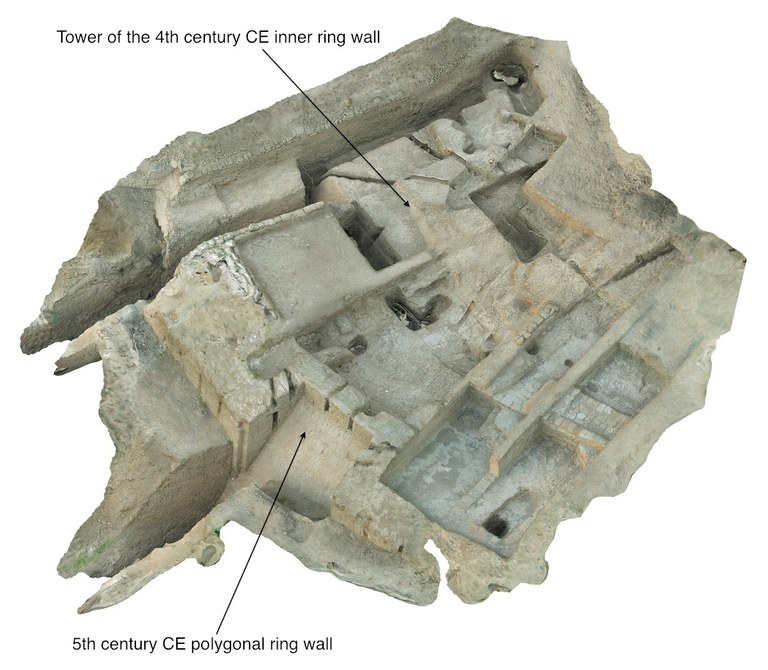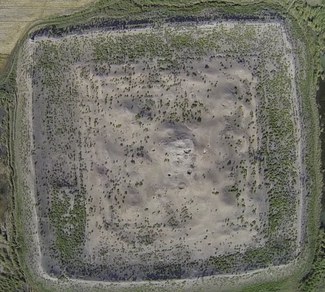Fieldwork 2014


ISAW’s project (in cooperation with the Uzbek Academy of Sciences) investigating the Ancient and Medieval defense system of the Bukhara oasis conducted its 2014 field season from June 30th to August 28th. Apart from members of the ISAW community, our team consisted of specialists from Uzbekistan, Germany and Russia.
This year we started excavating a new site (today called Hodzha-Adzhvandi-tepa) at the eastern fringes of the oasis, opposite the important kurgan burial grounds named after the former kishlak of Lyavandak. As a fortified border town, it caught our attention prior to excavation because of its circular citadel, which is unique in the region. So far we have exposed a substantial 5th century CE outer ring of fortifications in an excellent state of preservation, with rectangular towers at regular  intervals, and a checkerboard pattern of arrow slits spread over the entire façade. As we continued to excavate we were surprised to find that an inner ring of towers had preceded this outer ring of fortifications, anticipating most architectural features of the outer ring wall, but—according to the associated ceramic material—dating to the 4th century CE. The fortifications of this older phase also appear to be in an excellent state of preservation, making them one of the best-preserved 4th century fortifications in this part of Central Asia. The site appears to have great potential to substantially improve our knowledge of one of the most enigmatic periods in the history of Western Central Asia: the transitional era between Antiquity and the early Middle Ages that witnessed substantial upheaval and change over the course of the ‘Hunnic invasions’ into Sogdiana.
intervals, and a checkerboard pattern of arrow slits spread over the entire façade. As we continued to excavate we were surprised to find that an inner ring of towers had preceded this outer ring of fortifications, anticipating most architectural features of the outer ring wall, but—according to the associated ceramic material—dating to the 4th century CE. The fortifications of this older phase also appear to be in an excellent state of preservation, making them one of the best-preserved 4th century fortifications in this part of Central Asia. The site appears to have great potential to substantially improve our knowledge of one of the most enigmatic periods in the history of Western Central Asia: the transitional era between Antiquity and the early Middle Ages that witnessed substantial upheaval and change over the course of the ‘Hunnic invasions’ into Sogdiana.
In order to complement stationary excavations at Hodzha-Adzhvandi-tepa we also initiated an UAV based aerial survey this year, conducted by the team of the Archaeocopter project team at the University of Applied Sciences, Dresden—one of the first of its kind in this part of Central Asia. During the course of our survey we documented a total of 12 border fortresses (plus the famous 11th century mosque at Degaron). This documentation will result in detailed 3-D models for each of them.